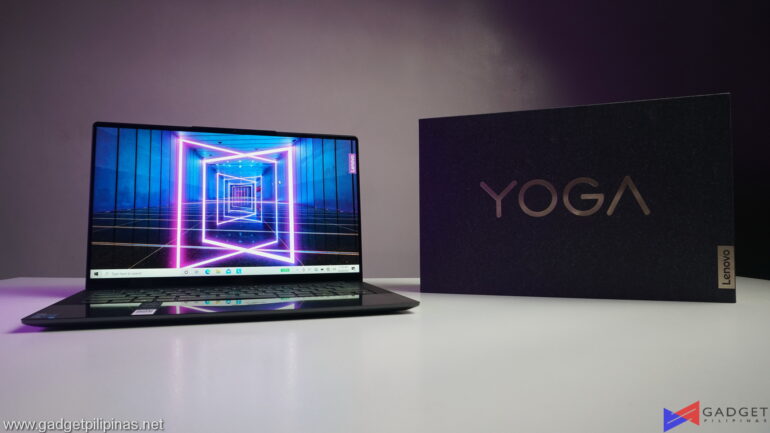The Lenovo Slim 9i is an upgraded version of the Lenovo Slim 7i and Slim 7i Pro but sits under the premium Lenovo Yoga 9i in terms of product positioning. The Lenovo Slim 7i Pro got a positive review from us as it was competitively priced for its specs not to mention its premium build quality while the Yoga 9i is a special edition variant that has stellar battery life. Sandwiched by two great products, how does the Lenovo Yoga Slim 9i fit into Lenovo’s product line? Let’s find out.
Lenovo Yoga 9i Configurations
| Lenovo Yoga Slim 9i Configuration | |
| Model | 81D1000CPH |
| Display | 14″ FHD 400N IPS |
| Processor | Intel Core i7 1165G7 |
| RAM | 16GB 4266MHz LPDDR4X |
| Storage | 512GB SSD |
| GPU | Iris Xe Graphics |
| OS | Windows 10 Home |
| Price | 89,995 |
The Lenovo Yoga Slim 9i is only available in one configuration, unlike the two most recent Lenovo Yoga laptops we’ve reviewed. While the Yoga 9i has a 4K display option, it seems like the local team didn’t op to bring that particular variant into the country. Priced at Php 89,995, the Lenovo Yoga Slim 9i is powered by an Intel Core i7 1165G7 processor paired with 16GBs of LPDDR4X memory and 512GBs of PCI-E Gen3 SSD. Like most Yoga products, the Yoga Slim 9i uses the integrated Iris Xe graphics.
Lenovo Yoga Slim 9i Unboxing and First Impressions
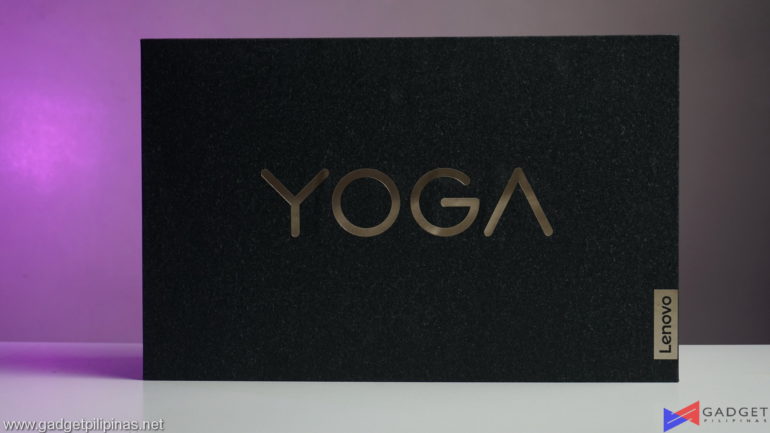
The Lenovo Yoga Slim 9i has the same Yoga signature packaging just like the rest of the Yoga lineup.
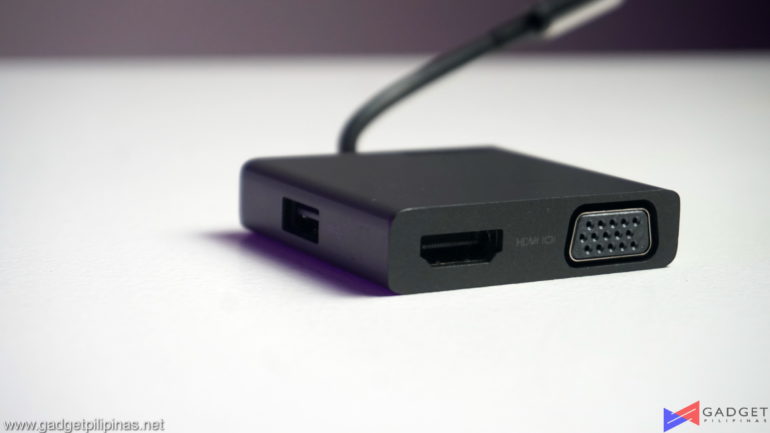
Like the Yoga 9i, the Lenovo Yoga Slim 9i has an included USB Type-C Hub out of the box however it doesn’t come with a Lenovo Smart Pen as the Slim 9i doesn’t have a touchscreen display.
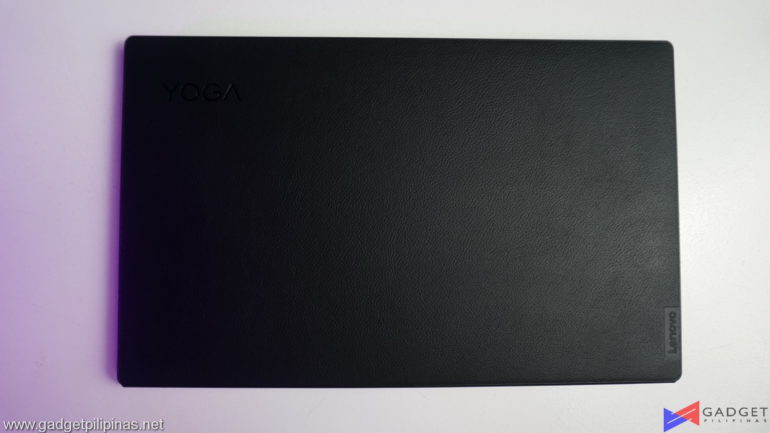
Similar to the Yoga 9i, the Slim 9i has a leather cover on the top lid with an embossed Yoga and Lenovo logo found at the same location as you would find on other Lenovo Yoga laptops.
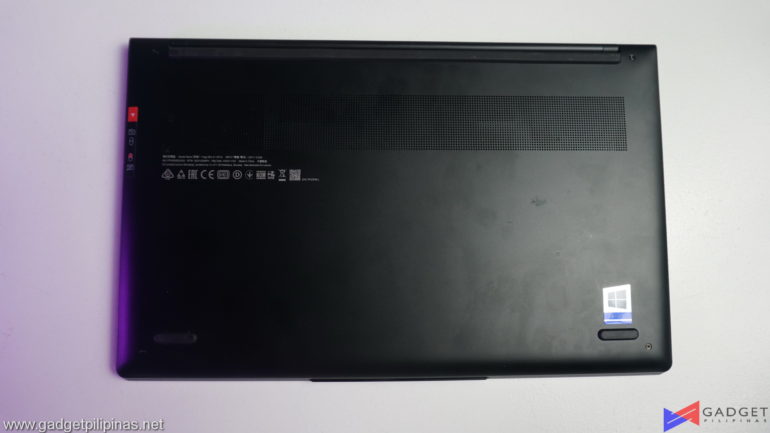
The Lenovo Yoga Slim 9i has the signature vented strip found on other Lenovo devices. Although the rubber feet on the Slim 9i don’t follow the standard for the rest of the Yoga line. There are only two short rubber feet strips on the bottom as opposed to a full-sized strip found on most Lenovo laptops.
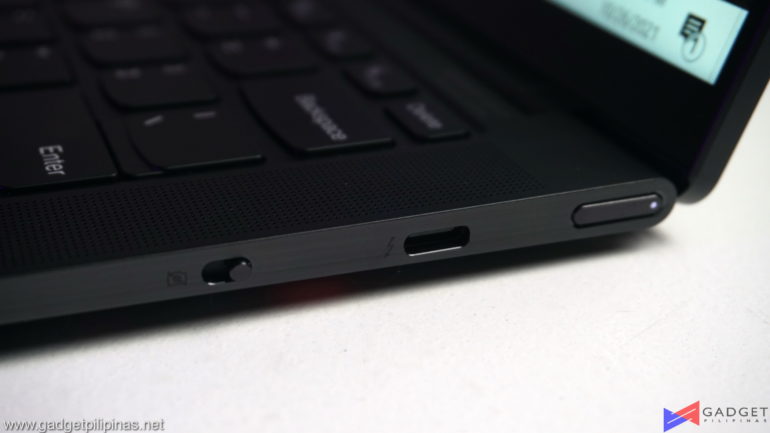
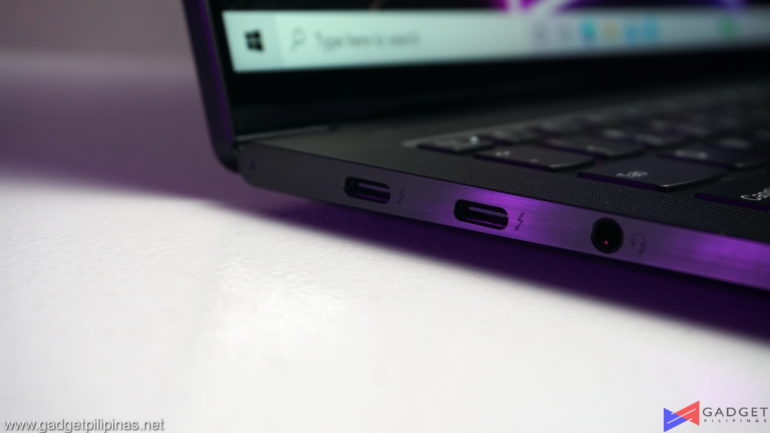
Ports-wise, the Yoga Slim 9i has three Thunderbolt Type-C ports compared to the two Thunderbolt and one USB-Type A port setup found on the Yoga 9i. The Type-A port is basically switched to a higher bandwidth Thunderbolt Type-C port which means more potential for connectivity via Type-C hubs but you need to be dependent on it since the Slim 9i doesn’t have any type-A port.
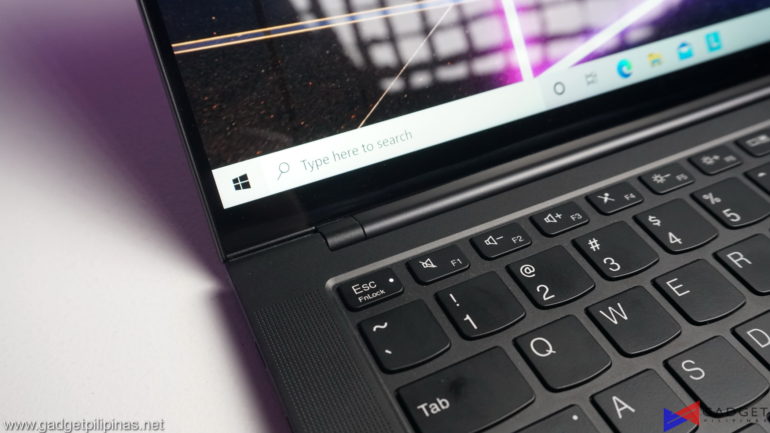
The Yoga Slim 9i uses a full-sized hinge that supports a full 180-degree orientation albeit the hinge doesn’t have an integrated speaker like the one found on the Yoga 9i.
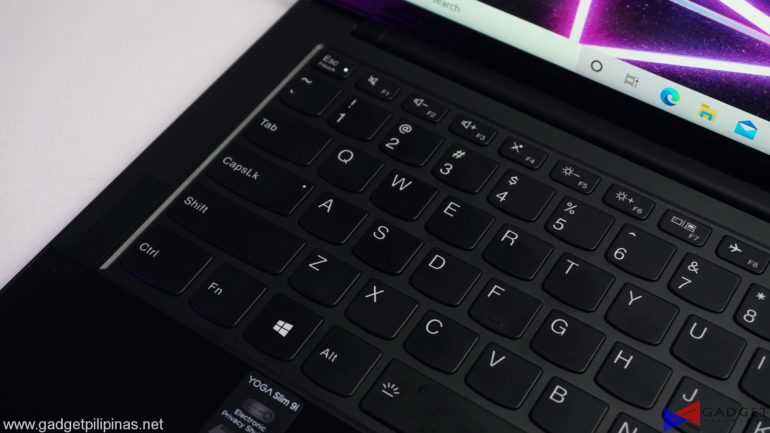
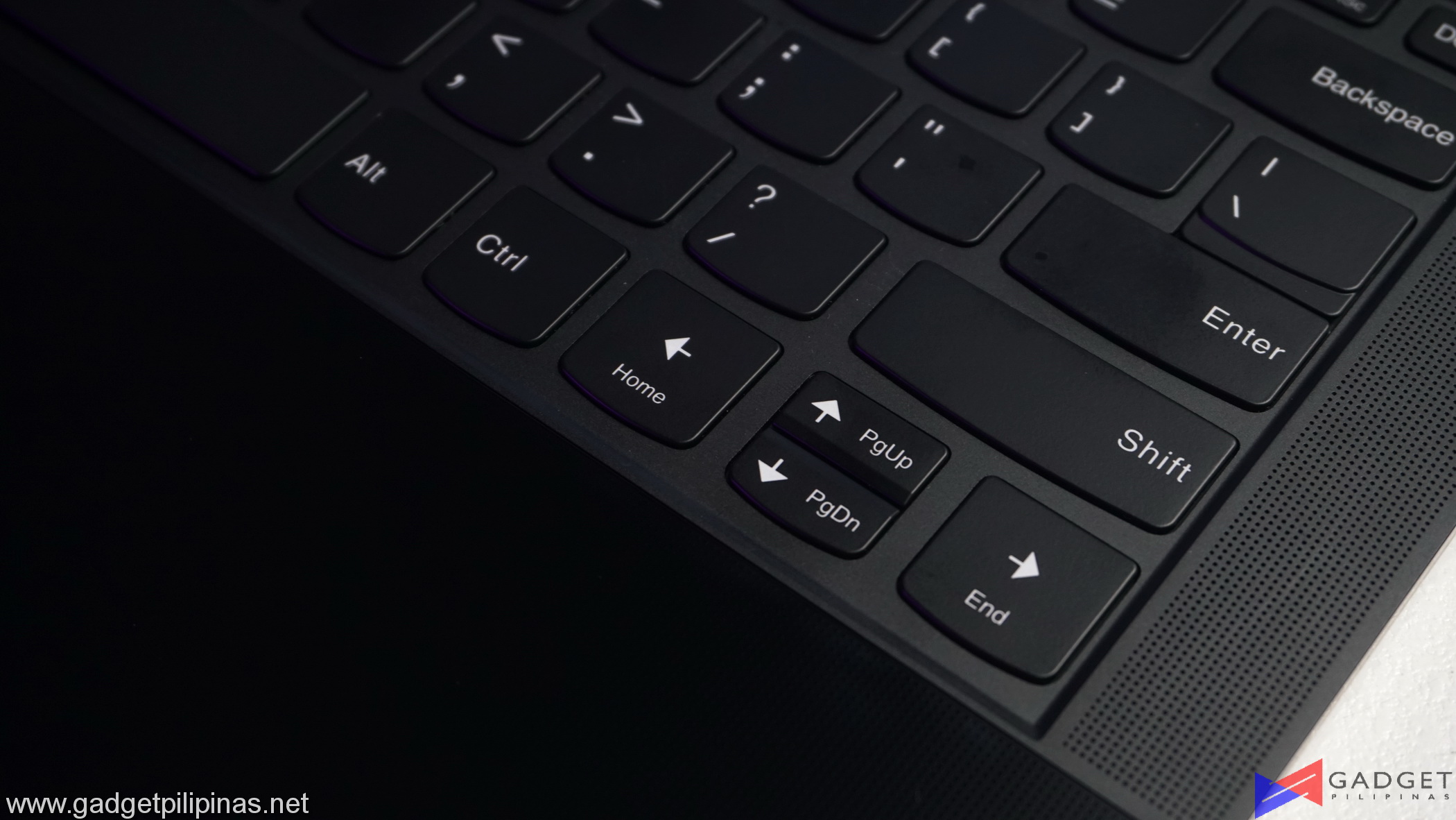
You have a standard Lenovo Yoga TrueStrike keyboard on the Slim 9i. The typing experience is about the same as the Slim 7i Pro that we recently reviewed.
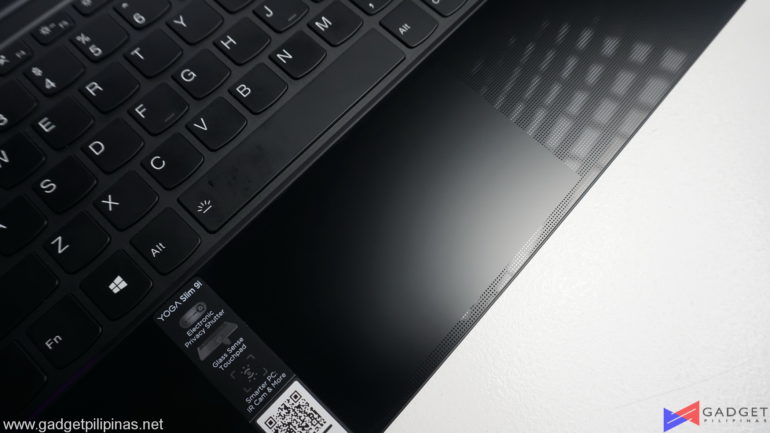
Where the Yoga Slim 9i stands out over the more premium Yoga 9i is the trackpad. The Slim 9i’s trackpad has smoother tracking as it’s not using a glass surface however it’s also a fingerprint magnet but not as bad as the one on the Yoga 9i.
Lenovo Yoga 9i Display and Camera
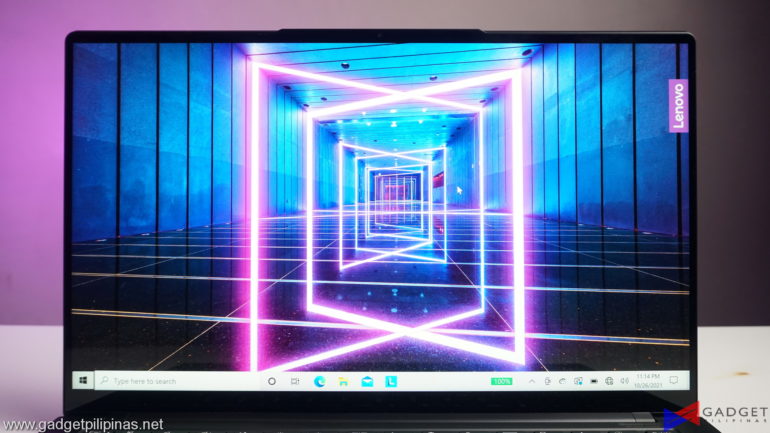
The Lenovo Yoga Slim 9i is can be equipped with either a 14-inch 1080p panel or a 4K screen but the latter is unavailable in the Philippines.
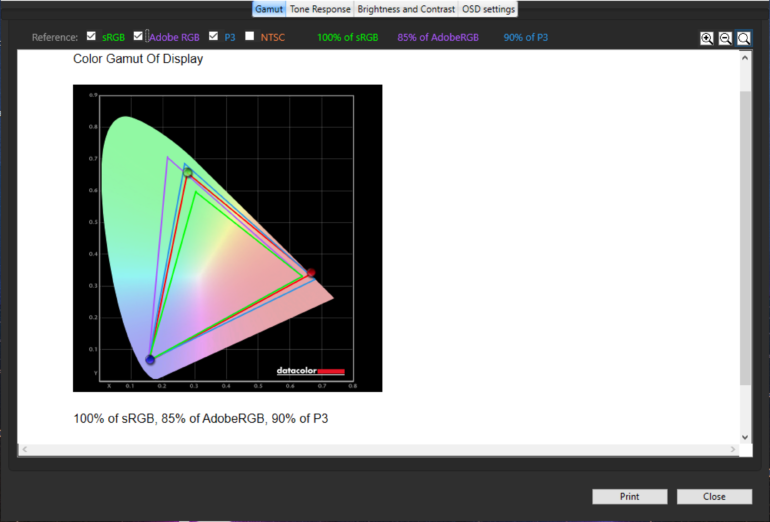
The panel on the Yoga Slim 9i is the best out of the three Lenovo Yoga devices we’ve reviewed so far. It sports a full 100% sRGB coverage, 85% of AdobeRGB, and 90% DCI-P3. The Lenovo Yoga Slim 9i is more than capable in professional photo and video related work.
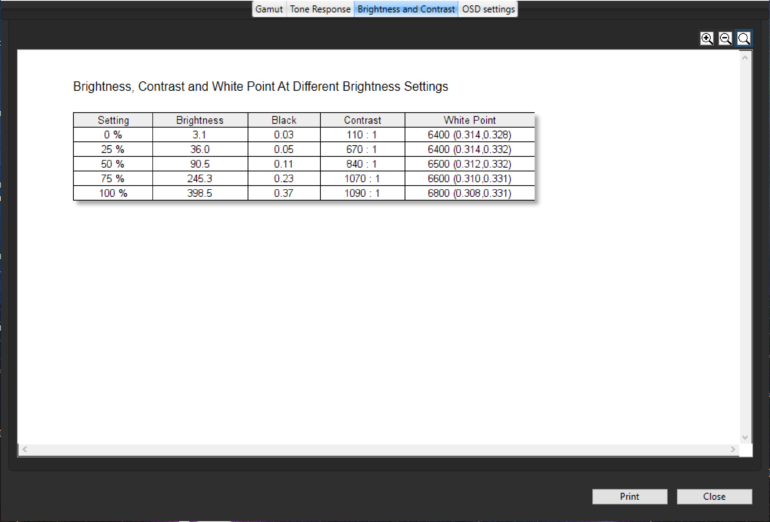
Brightness levels on the Slim 9i is above average with a peak brightness of 400 nits. Our recorded max brightness measures at 398.5 nits. Unfortunately, like the rest of the Lenovo Yoga line, the Slim 9i suffers from uneven brightness scaling as seen in the SpyderX Pro table.
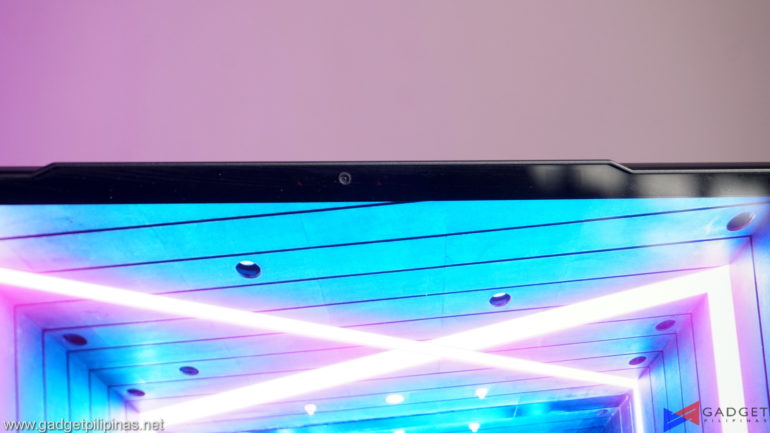
The Lenovo Yoga Slim 9i has the same camera placement as the rest of the Lenovo Yoga lineup. Moreover, the integrated webcam has an electronic privacy shutter switch found on the right side of the laptop.

Like the rest of the Yoga line, the webcam on the Lenovo Yoga Slim 9i has above average making it decent enough for taking video call and meetings provided you have ample lighting.
Lenovo Yoga 9i Synthetic Benchmarks
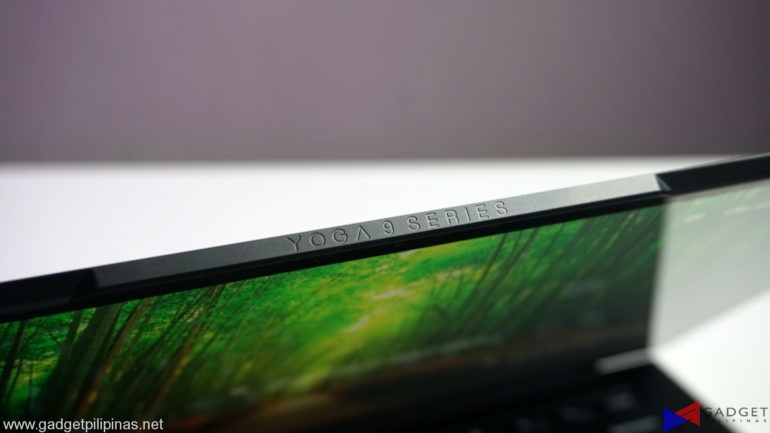
We benchmarked the Lenovo Yoga Slim 9i together with the different power settings found in the Lenovo Vantage Software. The main purpose of benchmarking power profiles will show how aggressive or conservative the manufacturer is in thermal management. These profiles will affect the CPU and GPUs’ boosting behavior in terms of duration and max clock speed which will translate to higher scores and stable framerates.
SuperPI 32M
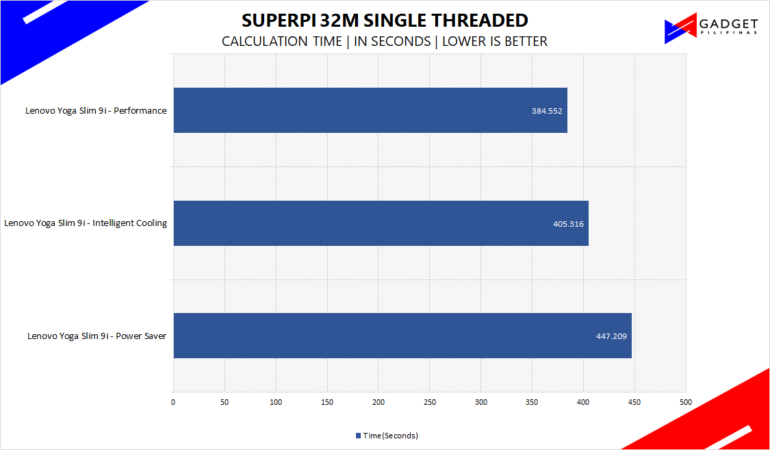
SuperPI is a single-threaded benchmark application that lets the CPU calculate Pi(π) to the nth digit. In this benchmark, we selected the Pi calculation to 32M, the highest available for the app.
wPrime 1024M
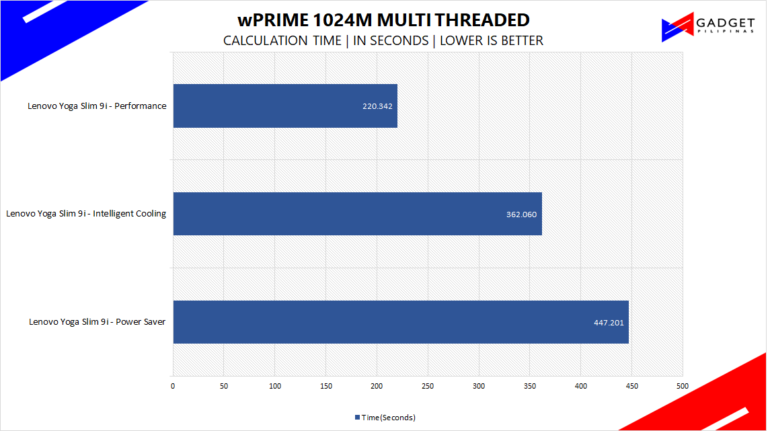
wPrime is a benchmark tool similar to SuperPI, but the former takes on finding prime numbers using Newton’s Method. The benchmark is set to calculate 1024 million prime numbers, and the performance is measured according to calculation time.
GeekBench 5
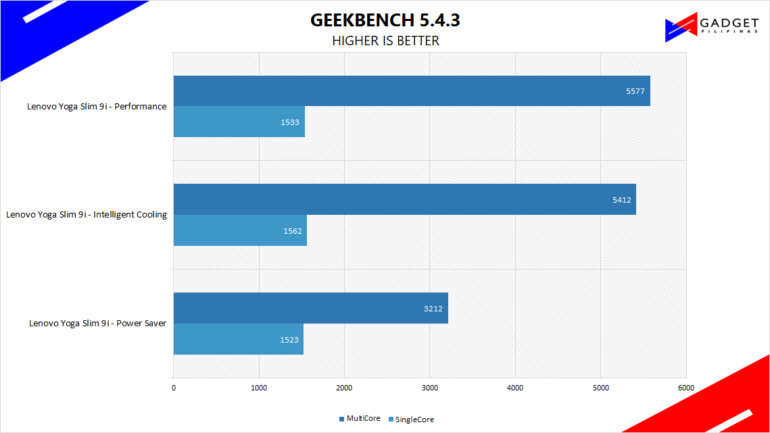
Geekbench is a multi-platform benchmark that’s used to gauge CPU performance and compare them across Windows, Mac, and Mobile. Geekbench 5 is the latest version and doesn’t rely on memory as much compared to the previous Geekbench 4, making it a great tool to measure both single-core and multi-core CPU performance.
CINEBENCH R20 & R23
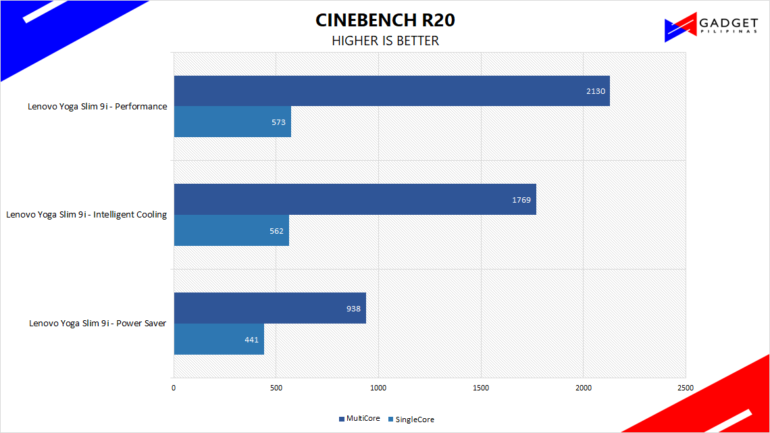
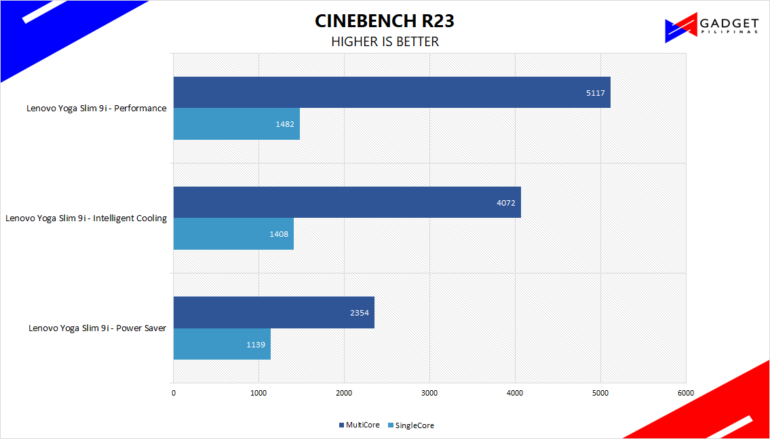
Maxon’s Cinebench benchmark is one of the most iconic benchmark applications used by reviewers and enthusiasts. The latest Cinebench R20 and R23 use the latest rendering architectures, including Intel’s Embree ray tracing technology and other advanced features from AMD and Intel that allow users to render the same scene on the same hard. Cinebench R23 uses a larger and more complex testing scene than Cinebench R20 by about 8x computational power and requires 4x the memory.
V-RAY
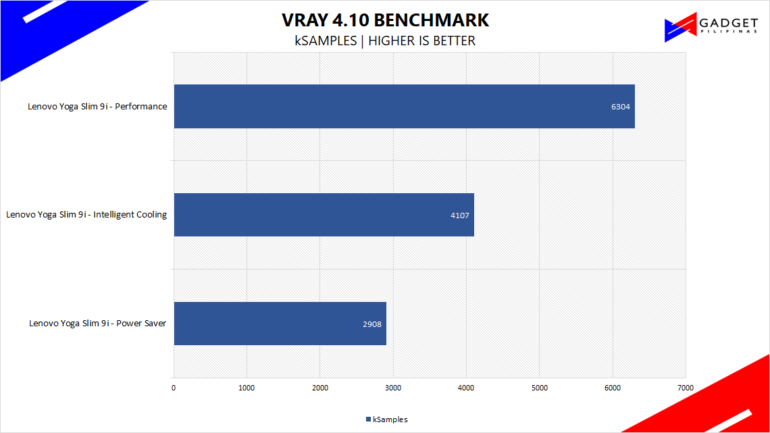
V-Ray Benchmark is a stand-alone version of V-Ray developed by Chaos Group. It is designed to test the CPU and GPU by rendering sample scenes at a fixed amount of time. V-Ray is a plug-in mostly utilized by 3D computer graphics software applications mainly for industrial design, product design, architecture, film, and video game production. V-Ray is not limited to 64-threads as it supports multi and mega-threading.
BLENDER
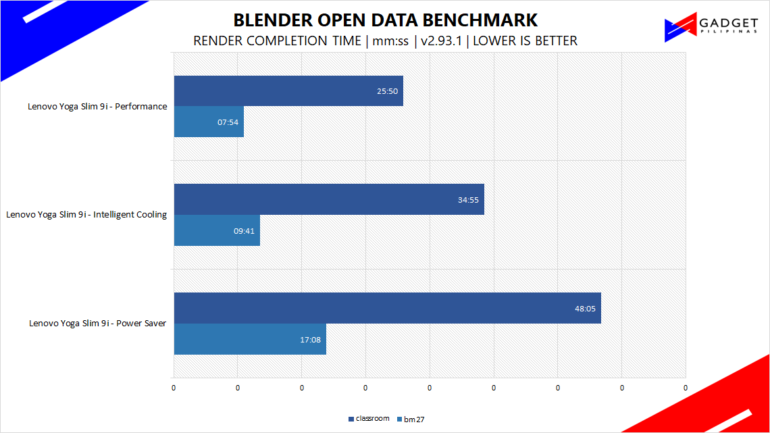
Blender is a widely used, free, open-source 3D creation suite. It supports the whole 3D pipeline process from modeling, rigging, animation, simulation, rendering, and even motion tracking. Blender has become a standard for CPU benchmarks with the BMW27 and Classroom scene most used. This prompted the company to release Blender Open Data Benchmark in 2018, a benchmark-specific version that allows users to run a preset benchmark and share the results online similar to 3D Mark.
CORONA RENDERER
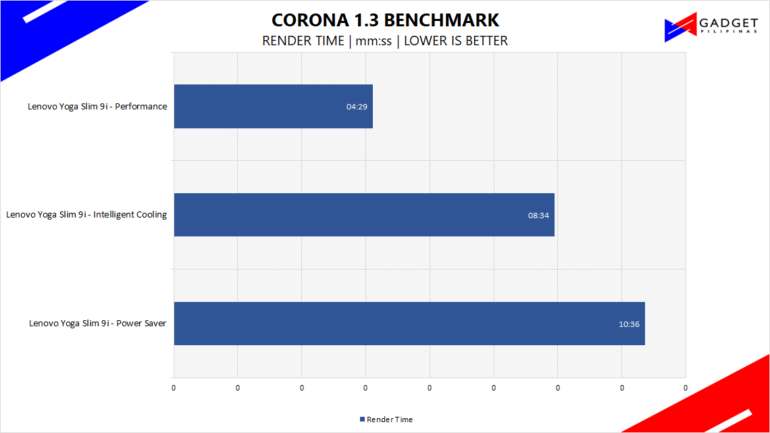
Corona Renderer is an unbiased photorealistic render available for Autodesk 3Ds Max, Maxon Cinema 4D, and as a stand-alone application. Its popularity, similar to Blender, led Chaos Group to develop a benchmark version of the app which runs using Corona Renderer 1.3. Workstation systems, especially CPUs, can utilize Corona Benchmark as up to 72 threads can be used in the benchmark, making it very suitable for CPUs with various price segments.
GOOGLE OCTANE 2.0
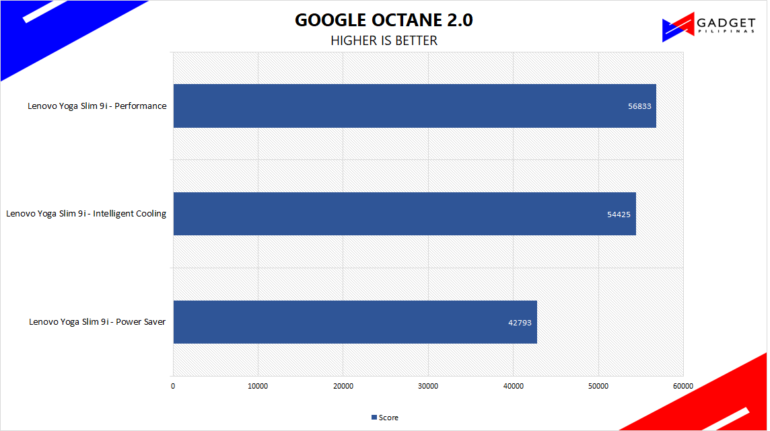
Google Octane 2.0 is a benchmark that measures a Javascript engine’s performance by running multiple tests representing different use cases of JavaScript applications. While Google Octane is retired and no longer maintained, it is still a good representation of today’s dynamic, interactive web applications. Our Google Octane 2.0 is run on Microsoft’s latest Chromium-based Edge browser.
PCMark10
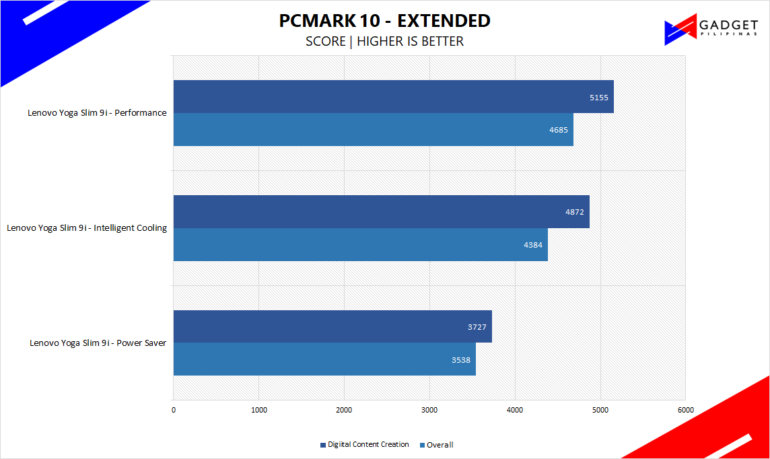
SSD Benchmark
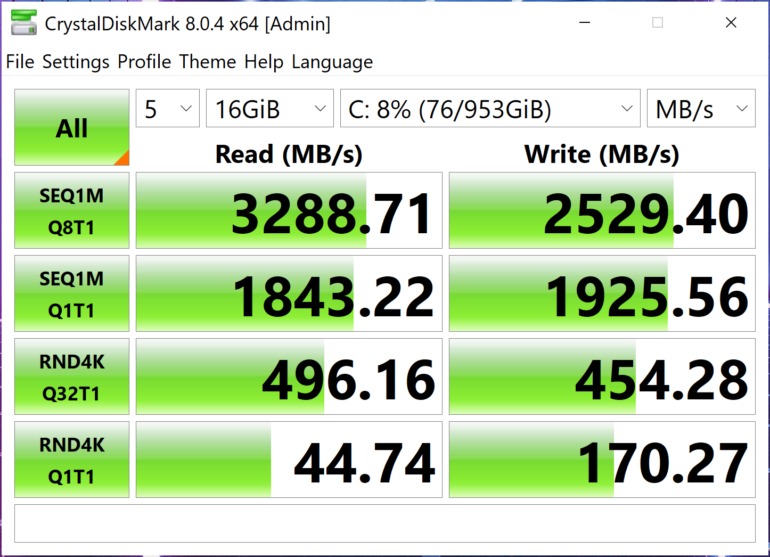
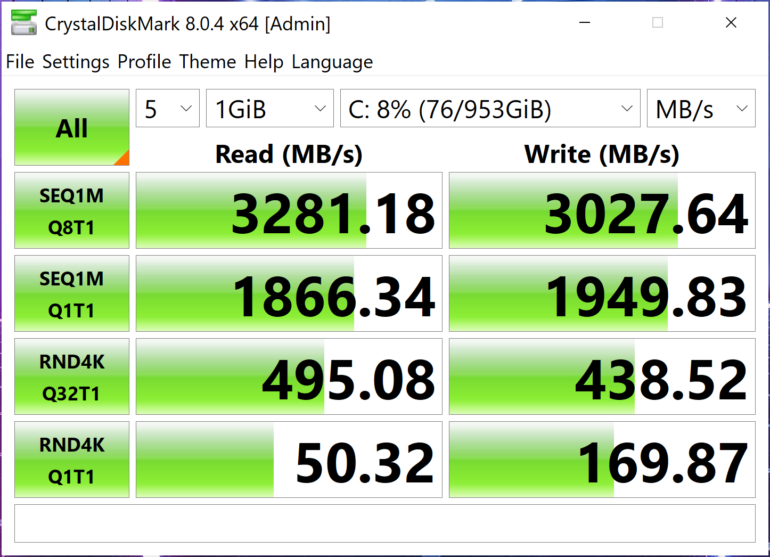
Developed by Noriyuki Miyazaki, CrytalDiskMark is a free benchmark tool that is being used by thousands of experts. This tool measures SSD’s sequential read and write speeds. That means how fast files can be read from and written to the drive, usually measured in MB/s.
The Lenovo Yoga 9i uses the WD SN730 NVMe SSD which is a common SSD found on ultrabook laptops and rivals the PM981a SSD which is also another common OEM SSD. Our CrystalDiskMark SSD benchmark validates the drive’s rated speed at both 1GB and 16GB workloads.
Lenovo Yoga Slim 9i Battery Life Testing
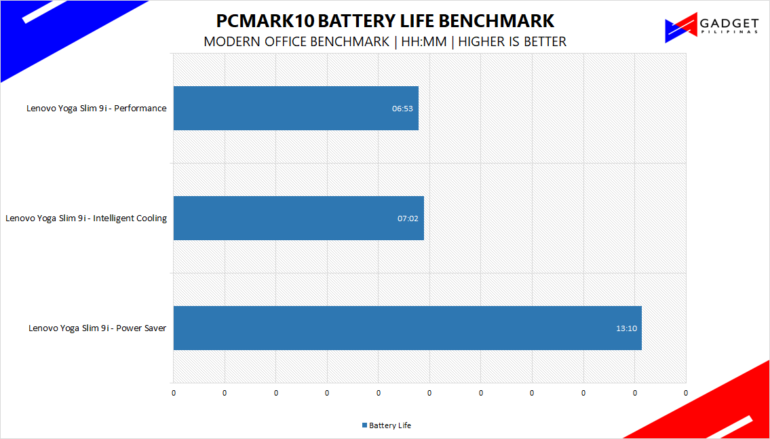
The Lenovo Yoga Slim 9i has an outstanding 13-hour battery life, about an hour longer than the more premium Lenovo Yoga 9i we recently reviewed. The shortest across its power profiles is seven hours long which is still impressive for an ultrabook.
Lenovo Yoga Slim 9i Thermals
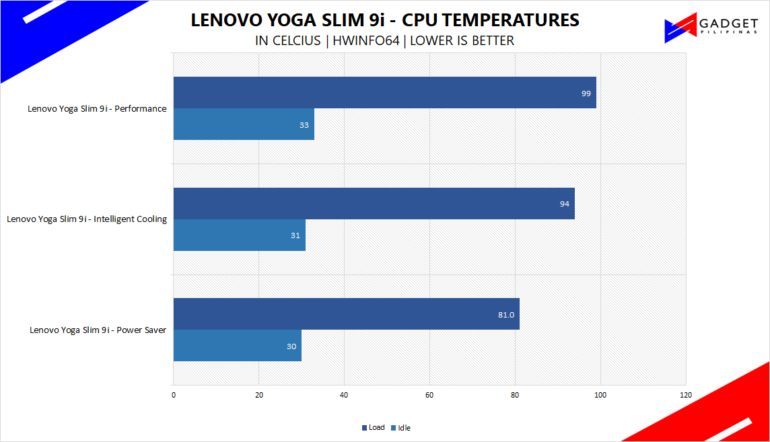
Unlike the Yoga 9i, the Yoga Slim 9i seems to have better cooling overall as the Intel Core i7 1165G7 CPU doesn’t reach 100-degrees with only the performance profile barely hitting the mark. That said, the former uses a much higher clocked CPU so the numbers on the Slim 9i are pretty much normal.
Conclusion
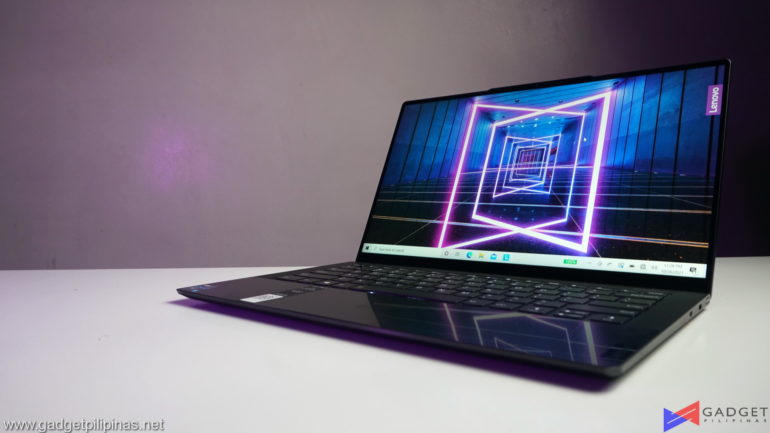
The Lenovo Yoga Slim 9i is simply a much more valuable option without the unnecessary bells and whistles found on the much more premium Yoga 9i. If you don’t need the Yoga 9i’s 360-degree hinge and touch screen capability but still want the superb battery life, performance, and premium Yoga experience found on the Yoga 9i, then the Lenovo Yoga Slim 9i is simply a better cost-friendly alternative. Frankly, I’d prefer the Yoga Slim 9i any day due to its better keyboard and trackpad which makes up the overall premium experience, performance aside. That said, at the Price of 89,995 the Lenovo Yoga Slim 9i overlaps with other Lenovo devices such as some configurations of the Slim 7i Pro and the Yoga 9i itself. However, the Yoga Slim 9i has a much better balance between performance, build quality, ease of use, and battery life.
Grant is a Financial Management graduate from UST. His passion for gadgets and tech crossed him over in the industry where he could apply his knowledge as an enthusiast and in-depth analytic skills as a Finance Major. His passion allows him to earn at the same time help Gadget Pilipinas' readers in making smart, value-based decisions and purchases with his reviews and guides.

